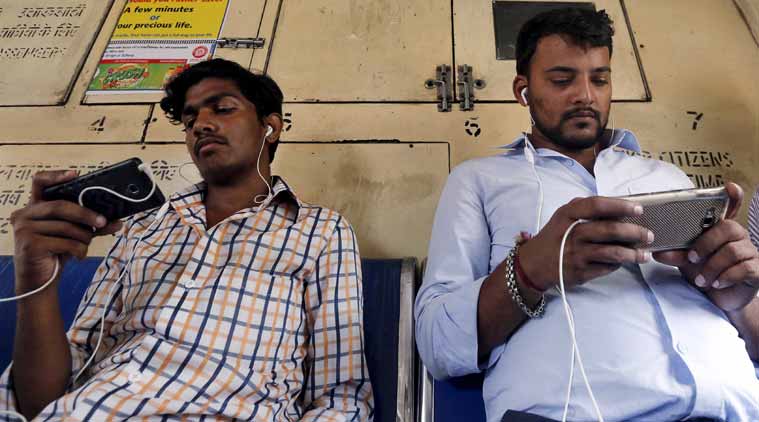Tier II cities to transform the future growth of smartphone market in India: Vivo
US and Chinese smartphone markets are now reaching a saturation point, India continues to attract global smartphone players like never before and there is much to expect from tier II and tier III cities
By Vivek Zhang
- Advertisement -
The smartphone segment has firmly set footprint in the Indian economic landscape. This sector is witnessing a surge like never before and is seen to be promising from the future perspective. There is a paradigm shift from feature phones to smartphones and the industry leaders foresee India well poised to take advantage of it in the near future.
According to a recent study by Assocham, the sale of smartphones in India is set to witness an upsurge of 160 million in FY 2017, from 100 million in FY 2016. This upsurge will be witnessed on the back of falling prices and customers upgrading from feature phones to smart devices.
India is at the cusp of digitalization, driven by mobility. This rapid growth in the digital market is directly proportional to the expectations of the customers and the services offered to them, as smartphones serve as multi-activity portals. In setting the footprints of digital India, smartphones have emerged as a pervasive driver. There are multiple factors propelling the smartphone adoption at an exponential pace.
India is the second largest smartphone market in the world after USA. 50% of Indian population is under the age bracket of 20-59 years and having over 1.3 billion people, only ¼th use smartphones, while the majority still uses feature phones. With the exponential growth in mobile telephony, India is set to become the number one smartphone market by 2017. And as LTE penetration continues to grow, initial estimates hint towards India being home to half a billion smartphone users by 2021. This incredible growth potential has drawn in many international players to revamp their pricing strategy to suit the Indian smartphone market.
As the US and Chinese smartphone markets are now reaching a saturation point, India continues to attract global smartphone players like never before. Prime Minister Narendra Modi, with his ‘Make in India’ campaign, opened the skies for other global players to come & set-up their manufacturing plants and R&D centers in India. With developed markets showing initial signs of tapering demand, India has become the destination for handset makers, irrespective of their country of origin.
- Advertisement -
Even with minimum order quantities, the new entrants are offering affordable smartphones for Indian customers keeping the market needs in mind. Smartphone brands from China are redefining the Indian domestic market with their superior quality products, faster mode of distribution and aggressive marketing campaigns, giving them much needed momentum. Setting up manufacturing plants and R&D centers in-line with ‘Make in India’ campaign has led to employment generation and job opportunities for Indians, making India a smartphone manufacturing hub.
Manufacturing products within the country also helps in reducing the end cost & saving on import duties and taxes. At the same time, government’s focus on Digital India is also centered on smartphones & the capability and potential of the device is immense. India has the internet user base of only 120 million, which accounts for the third largest user base in the world. India is fast moving on the path of digitization. Smartphone makers now seek a larger playground with internet access as well as making phones more affordable – thanks to initiatives of the government and global internet companies.
The budding internet economy along with the increasing smartphone penetration in the Tier 2 cities has changed the entire dynamics of India’s smartphone market as the smartphone customers in tier 2 & 3 cities are becoming more aware and demanding. 4G devices have overtaken the role of 3G devices with the upgradation in technology and needs of the population.
As per recent IDC research, 21.3% share of the country’s 3G smartphone market is comprised of 25 major Tier- II & III cities. On the other hand, close to 30 major cities in India constitute more than 50% of the smartphone market. But, as the customer in tier –II & III cities is becoming more aware and demanding, he has switched from feature phone to smartphones riding on sub $100 phones. With increasing appeal and penetration of smartphones in smaller cities and towns, tier II & III cities and beyond are expected to constitute a significant portion of the market in near future.
Smartphone makers are gradually building and investing significantly in the offline distribution network in tier 2 cities and beyond. These players are going all out to woo the young Indian mobile customer in the cities falling under Tier II category. And, the bottom line is that with growing number of customers using smartphones, the players have to integrate technologies to enhance the User Interface and the User Experience for the discerning Indian customers. Though there are success stories based on online sales model, but brands are experiencing the limitations of such a model in a country as diverse as India. With increasing appeal & penetration of smartphones in tier II and III cities, this market is on radar for most brands and is contributing a significant portion to the market.
What has made mobile telephony an indispensable part of population from Tier II & III cities is feature packed device at an affordable pricing. Owing to this, the boom in digital sector is expected to grow exponentially in the years to come.
The author is CMO, Vivo India
If you have an interesting article / experience / case study to share, please get in touch with us at [email protected]
Advertisement



